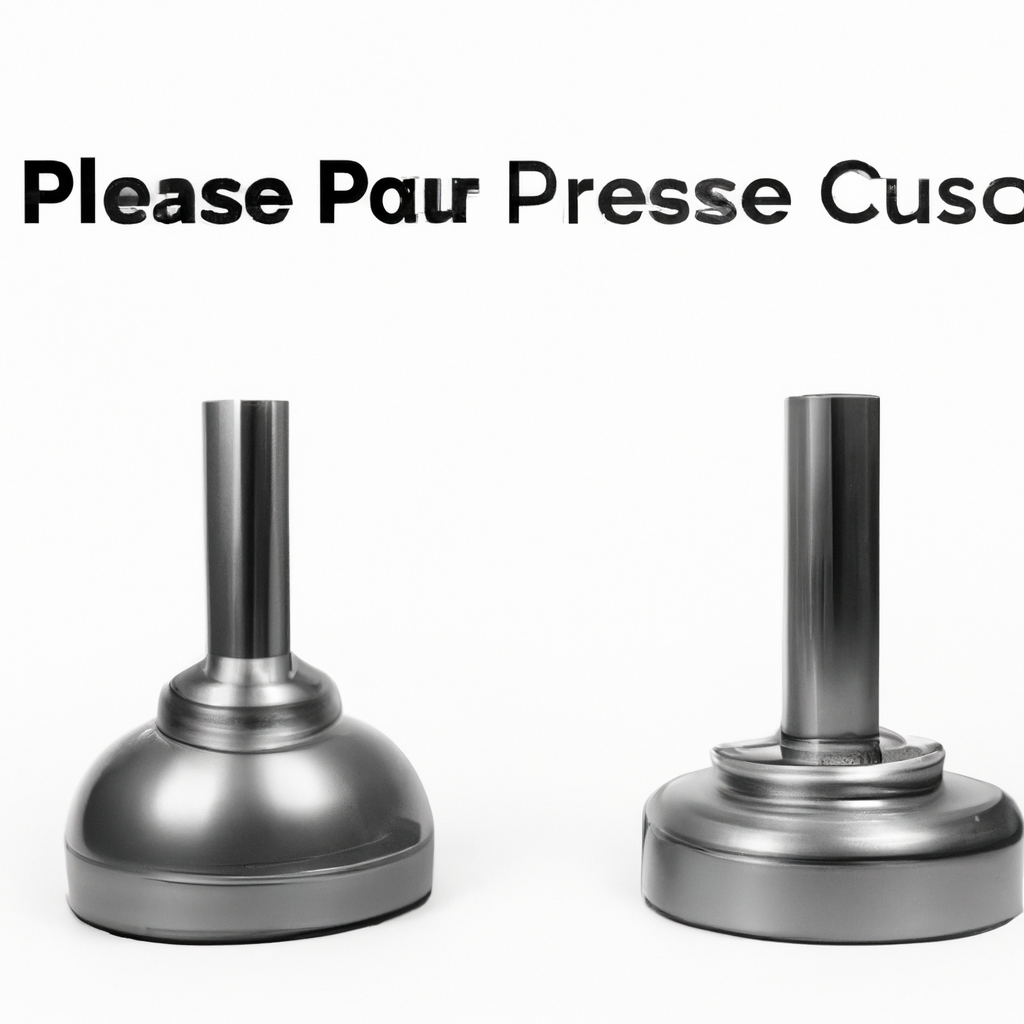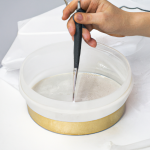-
Table of Contents
“Vacuum vs Pressure Casting: Unveiling the Superior Method for Flawless Precision!”
Vacuum and pressure casting are two prominent methods used in the manufacturing of metal and plastic components, each with its own set of advantages and applications. Vacuum casting involves creating a vacuum environment to draw liquid material into a mold, minimizing air bubbles and ensuring a smooth finish. In contrast, pressure casting utilizes high pressure to force the material into the mold, allowing for greater detail and faster production times. This introduction explores the key differences between these two casting techniques, examining their benefits, limitations, and suitability for various projects, ultimately helping manufacturers determine which method is better for their specific needs.
Vacuum Casting: Advantages and Applications
Vacuum casting is a highly regarded manufacturing process that offers numerous advantages, particularly in the realm of prototyping and small-scale production. This method involves creating a mold from a master pattern, which is then used to produce parts by pouring liquid material into the mold under vacuum conditions. One of the primary advantages of vacuum casting is its ability to produce high-quality parts with excellent surface finishes and intricate details. The vacuum environment minimizes the presence of air bubbles, which can compromise the integrity of the final product. As a result, components produced through this method often exhibit superior dimensional accuracy and a smooth surface, making them ideal for applications where aesthetics and precision are paramount.
Moreover, vacuum casting is particularly advantageous for producing parts in a variety of materials, including silicone, polyurethane, and other thermosetting plastics. This versatility allows manufacturers to select materials that best suit their specific application requirements, whether they are looking for flexibility, durability, or resistance to environmental factors. Additionally, the ability to replicate complex geometries with ease makes vacuum casting an attractive option for industries such as automotive, aerospace, and consumer electronics, where intricate designs are commonplace.
Another significant benefit of vacuum casting is its cost-effectiveness, especially for low to medium production runs. Unlike traditional injection molding, which requires expensive tooling and setup costs, vacuum casting can be executed with relatively low initial investment. The molds used in vacuum casting are typically made from silicone, which is less expensive and quicker to produce than metal molds. This characteristic not only reduces the overall production costs but also shortens lead times, allowing companies to bring their products to market more rapidly. Consequently, businesses can respond swiftly to market demands and make iterative design changes without incurring substantial financial penalties.
In addition to its economic advantages, vacuum casting is also an environmentally friendly option. The process generates less waste compared to other manufacturing methods, as it allows for the reuse of molds and materials. Furthermore, many of the materials used in vacuum casting are recyclable, contributing to a more sustainable manufacturing process. This aspect is increasingly important in today’s market, where consumers and companies alike are prioritizing sustainability and eco-friendliness in their production practices.
The applications of vacuum casting extend beyond prototyping; it is also widely used in the production of end-use parts, particularly in industries that require small quantities of specialized components. For instance, in the medical field, vacuum casting is employed to create custom prosthetics and medical devices that require precise specifications and high-quality finishes. Similarly, in the electronics sector, it is used to manufacture housings and enclosures that must meet stringent performance and aesthetic standards.
In conclusion, vacuum casting presents a multitude of advantages that make it a preferred choice for many manufacturers. Its ability to produce high-quality, intricate parts with a cost-effective approach positions it as a valuable method in various industries. The combination of versatility in material selection, reduced waste, and rapid production capabilities further enhances its appeal. As industries continue to evolve and demand more efficient and sustainable manufacturing solutions, vacuum casting is likely to remain a prominent method for producing both prototypes and end-use components.
Pressure Casting: Benefits and Use Cases
Pressure casting is a manufacturing process that has gained significant traction in various industries due to its unique advantages and versatility. This method involves forcing molten metal into a mold under high pressure, which allows for the creation of intricate shapes and fine details that are often difficult to achieve with other casting techniques. One of the primary benefits of pressure casting is its ability to produce high-quality components with excellent surface finishes. The pressure applied during the casting process minimizes the presence of air bubbles and other imperfections, resulting in a smoother and more refined final product. This characteristic is particularly advantageous in industries where aesthetics and precision are paramount, such as in the production of automotive parts, consumer electronics, and medical devices.
Moreover, pressure casting is known for its efficiency in terms of production speed. The process allows for rapid cycle times, enabling manufacturers to produce large quantities of components in a relatively short period. This efficiency is particularly beneficial in high-demand markets where time-to-market is critical. As a result, companies can respond swiftly to consumer needs and market trends, maintaining a competitive edge. Additionally, the ability to reuse molds for multiple casting cycles further enhances the cost-effectiveness of pressure casting, making it an attractive option for businesses looking to optimize their production processes.
Another significant advantage of pressure casting is its suitability for a wide range of materials. While traditionally associated with non-ferrous metals such as aluminum and zinc, advancements in technology have expanded its applicability to other materials, including certain alloys and even some thermoplastics. This versatility allows manufacturers to select the most appropriate material for their specific application, ensuring that the final product meets the required performance standards. For instance, in the aerospace industry, where weight reduction is crucial, pressure casting can be employed to create lightweight yet durable components that contribute to overall fuel efficiency.
In addition to its material versatility, pressure casting also supports complex geometries and designs. The high pressure used in the process enables the creation of intricate features that would be challenging to achieve through traditional casting methods. This capability is particularly beneficial in industries such as jewelry making, where detailed designs are essential. Furthermore, the precision offered by pressure casting allows for tighter tolerances, reducing the need for extensive post-processing and machining. This not only saves time but also minimizes material waste, contributing to more sustainable manufacturing practices.
The use cases for pressure casting are diverse and span multiple sectors. In the automotive industry, for example, pressure casting is commonly employed to produce engine blocks, transmission cases, and other critical components that require both strength and lightweight properties. Similarly, in the electronics sector, it is used to create housings and enclosures that protect sensitive components while maintaining an aesthetically pleasing appearance. Additionally, the medical field benefits from pressure casting through the production of surgical instruments and devices that demand high precision and reliability.
In conclusion, pressure casting stands out as a highly effective manufacturing method that offers numerous benefits, including superior surface finishes, rapid production speeds, material versatility, and the ability to create complex geometries. Its applications across various industries underscore its importance in modern manufacturing, making it a preferred choice for companies seeking to enhance their production capabilities while maintaining high standards of quality and efficiency. As technology continues to evolve, the potential for pressure casting to further innovate and adapt to new challenges remains promising.
Comparing Cost-Effectiveness of Vacuum and Pressure Casting
When evaluating the cost-effectiveness of vacuum and pressure casting, it is essential to consider various factors that influence the overall expenses associated with each method. Both techniques are widely used in manufacturing, particularly in the production of high-quality parts and components, yet they differ significantly in terms of initial investment, operational costs, and the quality of the final product. Understanding these differences can help manufacturers make informed decisions based on their specific needs and budget constraints.
To begin with, the initial investment required for both vacuum and pressure casting can vary considerably. Vacuum casting typically involves lower upfront costs, as the equipment needed is less complex and less expensive than that required for pressure casting. This makes vacuum casting an attractive option for small-scale production runs or prototyping, where the need for high-volume output is not as critical. In contrast, pressure casting necessitates more sophisticated machinery, which can lead to higher initial capital expenditures. Consequently, businesses that are just starting or those with limited budgets may find vacuum casting to be a more feasible option.
However, while vacuum casting may be less expensive to set up, it is crucial to consider the long-term operational costs associated with each method. Vacuum casting often requires more time to produce parts, as the process involves creating molds and allowing for the curing of materials under vacuum conditions. This extended production time can lead to increased labor costs and may not be suitable for high-volume manufacturing. On the other hand, pressure casting, despite its higher initial investment, can yield faster production rates due to its ability to produce multiple parts simultaneously. This efficiency can significantly reduce labor costs and lead to a lower cost per unit in large-scale production scenarios.
Moreover, the quality of the final product plays a pivotal role in determining the cost-effectiveness of each method. Vacuum casting is known for producing high-quality parts with excellent surface finishes and intricate details, making it ideal for applications where precision is paramount. However, the trade-off is that the materials used in vacuum casting can be more expensive, which may increase the overall cost of production. Conversely, pressure casting can produce parts with good quality at a lower material cost, but it may not achieve the same level of detail or surface finish as vacuum casting. Therefore, manufacturers must weigh the importance of quality against the associated costs when choosing between these two methods.
In addition to these factors, the choice between vacuum and pressure casting can also be influenced by the specific requirements of the project at hand. For instance, if a manufacturer is producing a limited number of prototypes or custom parts, vacuum casting may be the more cost-effective choice due to its lower setup costs and flexibility. Conversely, if the goal is to mass-produce components with consistent quality and reduced unit costs, pressure casting may prove to be the better option in the long run.
Ultimately, the decision between vacuum and pressure casting hinges on a careful analysis of the initial investment, operational costs, and the desired quality of the final product. By considering these elements, manufacturers can make a more informed choice that aligns with their production goals and budgetary constraints. In conclusion, while both methods have their advantages and disadvantages, understanding the nuances of cost-effectiveness can guide businesses toward selecting the most suitable casting technique for their specific needs.
Q&A
1. **What is the primary difference between vacuum casting and pressure casting?**
Vacuum casting uses a vacuum to remove air bubbles from the mold, while pressure casting applies pressure to force the material into the mold, ensuring a denser and more uniform fill.
2. **Which method is better for producing high-quality surface finishes?**
Vacuum casting is generally better for achieving high-quality surface finishes due to its ability to eliminate air bubbles and imperfections in the mold.
3. **What are the cost implications of vacuum casting versus pressure casting?**
Vacuum casting typically has lower initial setup costs and is more cost-effective for small production runs, while pressure casting may have higher setup costs but is more efficient for large-scale production.In conclusion, the choice between vacuum casting and pressure casting depends on the specific requirements of the project. Vacuum casting is ideal for producing high-quality, detailed prototypes with minimal defects, making it suitable for low-volume production and complex designs. On the other hand, pressure casting is more efficient for high-volume production, offering faster cycle times and better material utilization. Ultimately, the decision should be based on factors such as production volume, desired quality, material properties, and cost considerations.


